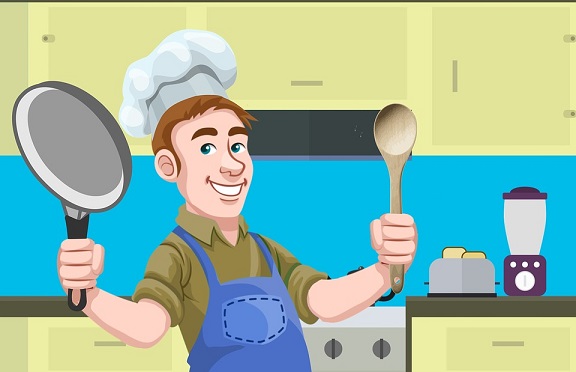Oven cooking is great for a wide variety of purposes, from cake baking to casserole making and everything in between.
However, like most kitchen appliances, there are a few curious culinary foibles that can greatly influence the end result.
To help you achieve oven-baked brilliance in a single bound, we’ve laid out a few handy cooking tricks below.
Read on to ensure your cooking remains red hot without feeling the burn.

Shut It
While it may be tempting to regularly check on your cooking throughout its oven residency, try to refrain from repeatedly opening the oven door.
Every time you open the oven, heat escapes the oven and the temperature within it can drop by 25 degrees or more, depending on the amount of time the door remains open.
As a result, this means the oven has to once again heat up to reach the desired temp, ultimately having a knock-on effect on the overall cooking duration.
Meanwhile, certain dishes benefit from a steady/constant cooking temperature – such as cakes, bread and meats – so fluctuations can actively impact the quality of the end-result.
To avoid relying on opening your oven to check on your dish as it cooks, use the oven window to check on its progression.
If your oven window is too dirty to visibly allow such observations, check out our handy blog on cleaning oven glass for complete transparency.
Pretty Vacant
While it may seem like a necessary evil at times, overcrowding your oven is a sure-fire way to negatively affect the quality of your cooking. As such, it’s advisable to try and steer clear of this method wherever possible.
Try to leave a couple of inches of space around pans and dishes to allow ample air circulation. This will help to ensure an even bake all around and avoid overcooking/burning one side.
Naturally, overcrowding can be virtually unavoidable if you’re cooking a large dinner for a cast of many, such as holidays and family occasions. If you are faced with catering for an army of hungry mouths, try to schedule your cooking and cook in batches.
Alternatively, it may be worth considering other means of cooking where possible to help free up space. This can be particularly handy when it comes to cooking vegetables, e.g. using the hob for boiling or even the microwave for steaming.
Another Level
Did you know that oven rack placement can have a big impact on the way your food cooks? It’s true! In fact, knowing which rack position to use for your corresponding dish can dramatically influence the way it cooks.
As a rule of thumb, the bottom rack is perfect for dishes that cook from the bottom up and require intense hear for a short period of time, making it perfect for items such as pizza.
Meanwhile, the middle is the go-to for anything that requires an even heat all around, making it ideal for anything from lasagne to pasta bakes.
Finally, the top rack provides greater heat from above, with most ovens featuring a grill for such purposes. The top position allows your dish to brown over the surface, which can be great for crusting a pie.
Feel the Heat
Ovens can often feature hotspots where the heat is more intense than elsewhere. Conversely, they can also naturally feature areas where the oven is cooler as a result.
If you happen to identify an area of your oven that cooks faster than others, naturally be wary of this when you're placing your foodstuffs. If positioning is unavoidable, rotating your dishes throughout can be a good way to remedy this.
To help identify hot spots and areas of greater heat, cover a baking sheet with shredded coconut and bake. This should give you a clearly visible indication of any areas that provide a more intense heat.
For more home cooking tips and oven hacks, why not check out our blog? Alternatively, drop us a line on 02920 452 510 today or click the link below to get in touch online now.
Get in Touch